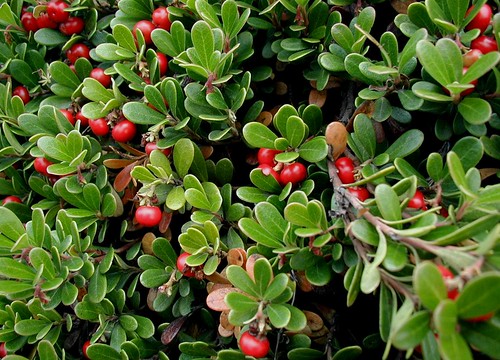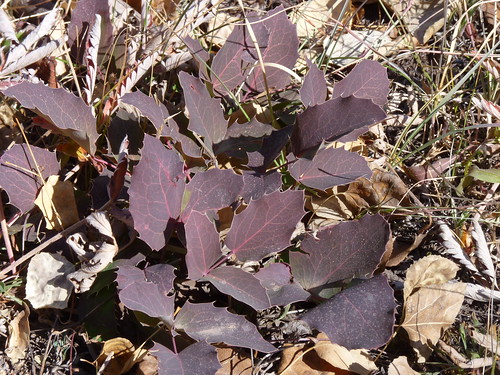
Several plant species around Montana make their transition from summer to winter unique. This is highlighted in the Bitterroot National Forest.
The Oregon-grape (Mahonia repens), a sub-shrub evergreen, maintains its leaves throughout the winter. In the summer, its leaves are green while it produces yellow flowers. In the fall, its leaves create a beautiful, eye-catching palette of reds in contrast to its purple berries. Oregon-grape is found throughout the Ponderosa pine and Douglas-fir forests.
Quaking aspen (Populus tremuloides) is a deciduous tree found commonly across the Western United States. It is unique in that it can be found in landscapes comprised primarily of pines. Its changing leaves of yellows and oranges are striking against the dark green needles of the pines. Quaking aspen is also interesting due to the hissing sound its leaves create when the wind blows. The flattened petioles of the leaves is what creates the sound and allow each leaf to flutter as if it’s quaking, after its namesake.
Although far smaller than maples on the East Coast, Rocky Mountain Maple (Acer glabrum) is a notable tree on the Western landscape. Unlike other maples, Rocky Mountain Maple arises from several stems. Like other maples, Rocky Mountain Maple creates a cascade of yellows, oranges, and reds when its leaves begin to change color in the fall. Rocky Mountain Maple is seen along roadsides and is scattered along steep slopes and swales.

Kinnickinick (Arctostaphylos uva-ursi) is a small ground shrub which is evergreen, like Oregon-grape. Unlike Oregon-grape, the leaves of Kinnickinick do not change color in the fall, their leaves maintain their dark green color through the winter. The ripened red berries of Kinnickinick are especially beautiful against its dark green leaves.
Alders (Alnus sp.) are important members of many forest communities. They are often found along streams and moist areas. Although their leaves are deciduous, they do not display magnificent colors in the fall. Alders are not pines, but they produce tiny cone-like catkins which hold the seeds. These tiny “cones” are maintained on the tree for several years after they drop their seed and are perfect for adding to any wreaths or fall ornamental creations.
The U.S. Forest Service is waiving fees during the Veterans Day weekend. To find out more, click here.

